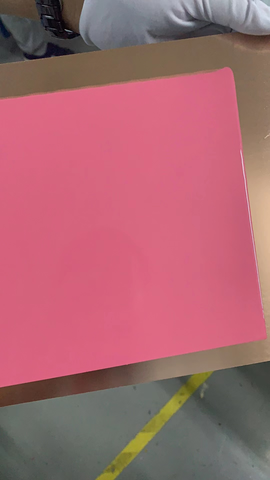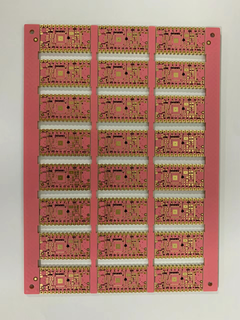A "pink PCB" typically refers to a printed circuit board that has a pink solder mask or solder resist coating. The solder mask is the protective layer on top of the copper traces of a PCB, and it serves to insulate and protect the copper traces from environmental factors, solder splashes, and other potential sources of damage.
The color of the solder mask can vary, and pink is one of the less common colors used in PCB manufacturing. PCBs are more commonly seen with green solder masks, but they can also come in other colors such as red, blue, black, or even white.
And now the "Sakura Pink PCB" launched by Victory PCB is a major innovation in the PCB industry, providing a richer choice for more electronic technology enthusiasts and meeting the expectations and requirements of a small number of people for colors. After the product was launched, it was loved by some customers.

Innovation and development is an important concept of Victory PCB's long-term and stable operation of the enterprise. Victory PCB will lead the industry progress with a forward-looking vision. This new Sakura Pink PCB will also create a new trend in the PCB industry. In addition to the difference in color, Sakura Pink, like other inks, supports conventional and special processes, such as custom lamination structures, support for impedance matching, square grooves, etc.

Photoimageable Solder Resist Ink uses UV light curing, and after screen printing, it needs to be exposed and developed after pre-baking. Generally used in the production of various PCB hard boards, flexible boards with precision pads on the circuit board in addition to dry film will also use photoresist type solder resist ink. The thermosetting ink is baked directly after printing. The common ones are mobile phone antenna board ink and white solder mask ink for light strip board. For UV ink, the most common is UV green oil, is generally used in circuit boards with low requirements or in the automatic production of circuit boards with large output. Compared with UV ink, photosensitive ink and thermosetting ink, photosensitive ink has higher requirements, followed by thermosetting ink, and then UV ink. Generally speaking, the adhesion of UV ink will be worse, and the precision of photosensitive ink will be higher.
Solder Mask Color: The most obvious difference is the color of the solder mask. A pink PCB has a pink solder mask, while a common PCB often has a green solder mask. The color choice is mainly a matter of aesthetics and branding and doesn't significantly affect the functionality of the PCB.
Material: The base material used for both pink and common PCBs is typically the same. It's usually a fiberglass-reinforced epoxy laminate known as FR-4. The choice of base material depends on the specific requirements of the PCB, such as its intended application and environmental conditions.
Manufacturing Process: The manufacturing process for pink and common PCBs is essentially the same. It involves several steps, including designing the PCB layout, printing the circuit pattern on the board, etching the copper layers, applying the solder mask, and silkscreen printing for component labels and markings. The only difference is the color of the ink used for the solder mask.
Functionality: Both pink and common PCBs function the same way. They provide the electrical connections needed for various electronic components on the board. The solder mask helps insulate and protect the copper traces from environmental factors, solder splashes, and other potential sources of damage.
Applications: The choice between a pink and a common PCB is often based on aesthetics, branding, or personal preferences. Some companies may choose a unique solder mask color like pink to make their products stand out or to align with their brand identity. However, this choice does not affect the PCB's performance or suitability for different applications.
By continuing to use the site you agree to our privacy policy Terms and Conditions.
Recruit global agents and distributors Join us